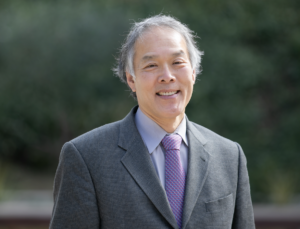The July 1 change to the Department of Population and Public Health Sciences reflects the department’s tremendous growth, expansion in its areas of research, and mission to improve public health for all people locally and globally.
(Originally posted at Population and Health Sciences.)
By Cristine Hall
The Department of Population and Public Health Sciences will become the Department of Population and Public Health Sciences at Keck School of Medicine of USC on July 1.
The name change signals a new era for the department, which has undergone tremendous growth and expansion in its areas of research since its founding in 1977 and renewed focus on its educational programs post-pandemic.
“The global coronavirus pandemic changed how the world views public health by making people more aware of the need for research and education in population and public health sciences,” said Howard Hu, MD, MPH, ScD, who joined the department as professor and Flora L. Thornton Chair in July 2020. “Now more than ever, our students, faculty and staff are advancing our mission of improving public health for all people, locally and globally.”
The meaning behind the name
Both “population health” and “public health” address the health status and health outcomes of groups of people rather than considering the health of one person at a time. The concept may seem obvious, but it reflects a new approach for healthcare providers who traditionally are trained to care for individuals.
Population health tends to focus more on the economic and social conditions that influence health as well as identifying and addressing the drivers of disparities in health between population subgroups, Hu said.
For example, population health would recommend that a population as a whole stop smoking and also focus on young adults as a subgroup particularly vulnerable to cigarette advertising, while public health would go a step further to incorporate public health interventions, such as smoking bans in public places and peer education programs to help individuals and communities.
“Our department embraces both concepts and brings to them amazing strengths in terms of research and application of research—hence the additional inclusion of the term, ‘sciences,’” Hu said.
The department earned a No. 2 ranking for the second year in a row in terms of funding from the U.S. National Institutes of Health (NIH) for its work in cancer, environmental health, addictions, genomics, and other areas.
The department, which has over 110 faculty members, offers educational programs in the six divisions of bioinformatics; biostatistics; disease prevention, policy, and global health; environmental health; epidemiology and genetics; and health behavior research. It is home to three institutes, seven laboratories and 13 centers including COVID-19 Pandemic Research Center.
